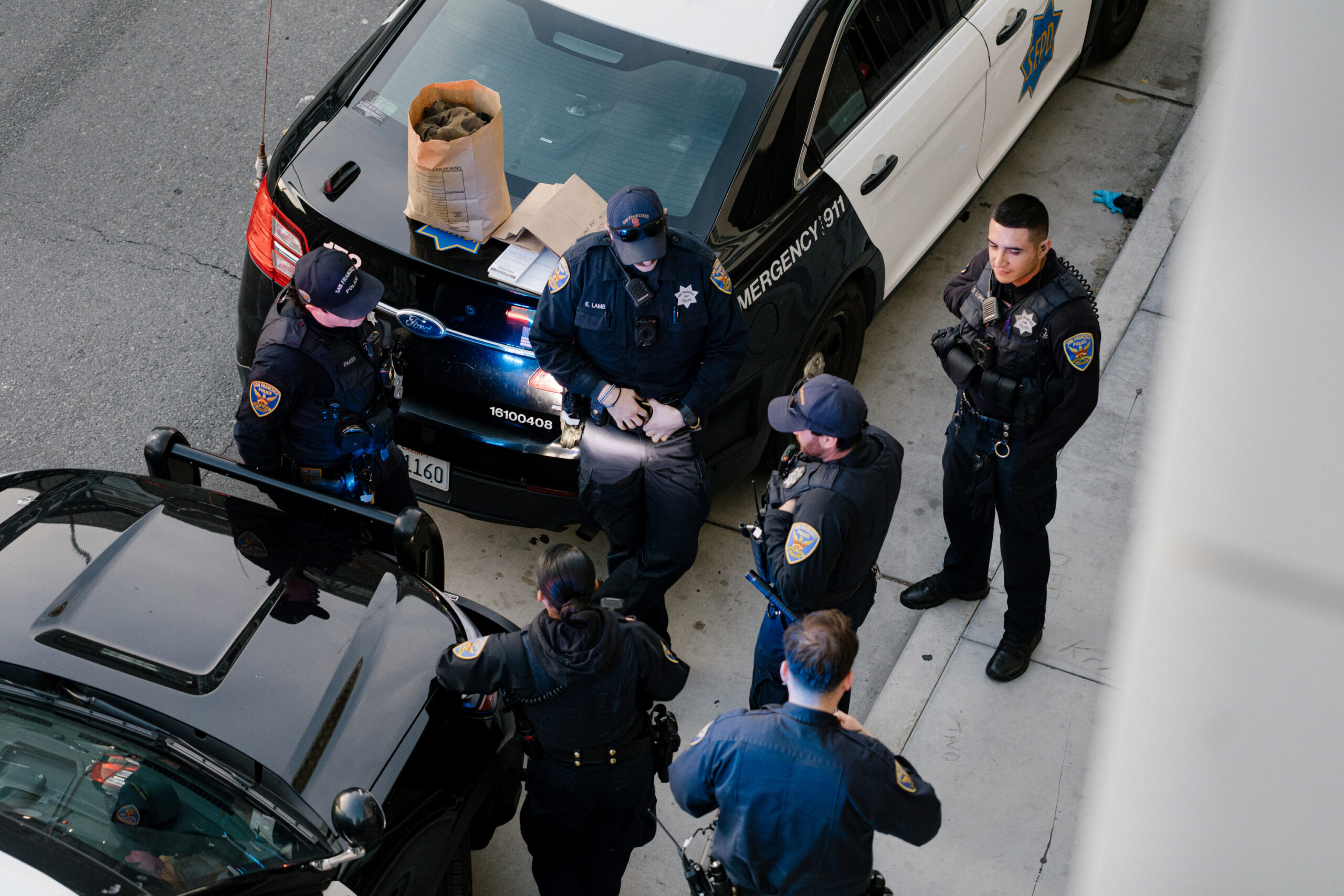San Francisco police have quietly begun using real-time camera footage to arrest suspected fentanyl dealers, records obtained by The Standard show.
Police brass gave officers permission to use privately owned security cameras to monitor the public on four different occasions since City Hall greenlit the new surveillance program in a contentious decision late last year, according to police records obtained through a public records request.
Officers used real-time camera monitoring to investigate fentanyl dealing and stolen goods fencing, the records show. Two of the operations targeted fentanyl dealers in the South of Market neighborhood, resulting in a pair of narcotics arrests as well as felony charges filed by District Attorney Brooke Jenkins.
A narcotics lieutenant who sought permission to live-monitor the cameras wrote in his requests to higher-ups that SFPD needed the tool to “stem the tide of fentanyl fatalities” and “address the plague known as fentanyl.”
“The use of the cameras will assist in investigations that identify and arrest fentanyl dealers, thus stopping the fentanyl emergency crisis,” he wrote.
San Francisco recorded 268 accidental overdose deaths in the first four months of 2023—a 37% increase over the prior year, according to the most recent preliminary data released by the Chief Medical Examiner’s Office. Of those deaths, the preliminary data shows that 211 involved fentanyl.
The records obtained by The Standard offer a first look at how SFPD will actually use its newfound live surveillance powers following a heated battle at City Hall over the extent to which police should be allowed to watch security cameras in real time to monitor public streets in San Francisco.
The debate pitted those concerned about government overreach and mass surveillance against proponents who saw the potential benefits of live monitoring for everything from combating stunt-driving sideshows to responding to mass shootings.
Police Commissioner Kevin Benedicto, who has expressed trepidation about expanding police surveillance, said he was open to creative solutions for stemming the fentanyl crisis but uncertain how live-monitoring will help.
“I think it’s too early to tell what role this will play in addressing the fentanyl crisis,” Benedicto told The Standard on Wednesday. “It’s not something we can purely police our way out of.”
While the department has used cameras to live-monitor the public in the past, including to watch the San Francisco Pride Parade and other large-scale events, its surveillance practices drew a lawsuit from civil liberties groups.
Those legal troubles led the department to formally seek approval from the Board of Supervisors to use live-monitoring during criminal investigations or life-threatening emergencies and to deploy officers during big events.
SFPD won early support for the new tool from Mayor London Breed, who pushed for live surveillance and hiring more police in a nationally watched speech calling for an end to all the “bullshit” on the streets.
The department ultimately got the go-ahead for a 15-month pilot program last October with a 7-4 vote from the Board of Supervisors.
While police can now live-monitor any security camera with permission from the owner and for the approved reasons, SFPD is expected to lean heavily on the growing networks of security cameras set up in commercial districts around the city with funding from crypto executive Chris Larsen.
It’s unclear who owned the cameras used by SFPD thus far.
SFPD used live surveillance for the first time under the new rules on April 19, when a sergeant monitored camera footage “intermittently” from 12:30 p.m. until 10 p.m., according to the newly released records.
The sergeant live monitored an undisclosed area to address “citizen complaints of fencing of stolen property,” the records show.
The operation did not result in an arrest.
The following week, on April 24, a narcotics lieutenant asked for permission to conduct the first of three live monitoring operations into fentanyl dealing.
The investigation resulted in an arrest and the seizure of 30 grams of methamphetamine, 90 grams of fentanyl and 11 grams of heroin. An officer and sergeant watched live footage for an hour and five minutes.
A 27-year-old man was booked and charged with three drug-dealing-related felonies, court records show.
A police spokesperson said officers saw him “make several transactions of possible narcotics sales with other people” in public near Seventh and Mission streets—an area known for drug dealing.
The second live-monitoring investigation into fentanyl dealing happened on April 28, when records show that an officer and sergeant watched camera footage for 40 minutes and made an arrest. They seized 30 grams of fentanyl, 10 grams of methamphetamine and four grams of cocaine base.
Officers arrested a 23-year-old woman from San Francisco after they saw her make “several transactions with other people” in public, according to the police spokesperson.
Prosecutors have since filed felony drug-dealing charges against the woman, who was out on bail on another narcotics case from a month earlier when police arrested her, court records show.
The most recent time police brass gave officers permission to use live surveillance was for a fentanyl dealing investigation on May 5, although it’s unclear from the police records whether the real-time monitoring occurred.
At the Police Commission last week, Police Chief Bill Scott acknowledged that the department had started using live monitoring to make arrests.
“This hasn’t really taken off yet in volume,” Scott said. “But we’ve been thoughtful in what we are doing.”
